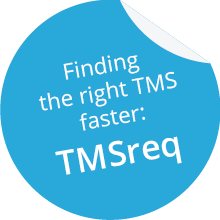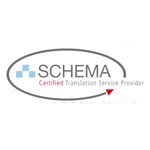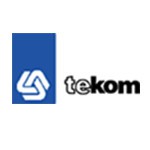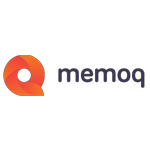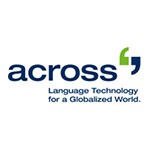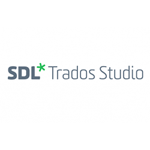Certified according to ISO 13485
As a supplier of translations in the field of labelling, IFUs and marketing materials, Gemino has been ISO 13485 certified for translations in the field of medical devices since the beginning of 2024.
The ISO 13485 standard defines quality management requirements specifically for companies that manufacture and distribute medical devices. The standard is very similar to ISO 9001 and is based on the EU regulations on medical devices (2017/745) and in vitro diagnostic medical devices (2017/746).
The certification procedure consists of an audit readiness assessment, possibly in advance, and of an actual audit, which usually takes place on site at the company.
In contrast to ISO 9001, the standard requires the consistent implementation of a strong risk-based approach. In addition to product realization, this covers the entire life cycle, including the product supply chain and product-related documentation. This includes translation and related services. With ISO 13485 certification, Gemino offers its clients from the medical sector the assurance that their multilingual content and the associated translation processes meet regulatory requirements.
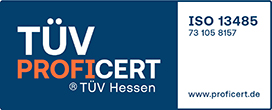
What ISO 13485 means for our clients
ISO 13485 is a standard for manufacturers of medical devices. Besides various industry-specific requirements, one aspect is of particular importance in the context of translations:
Every text in which statements are made about the product must be seen as an integral part of the product. It is therefore subject to all requirements to which material/physical product components are also subject.
According to the MDR, any “claims” made by the manufacturer about the product must be accurate, i.e. they must not be misleading. It does not matter in what form or context such a claim is made: in form of text, pictures or speech; in instructions for use, labelling or marketing material.
This is regardless of whether a text is a translation or not. A statement that a text is “only” a translation and that the original version prevails in the event of conflicts is not acceptable. This means that the same requirements apply for translations and original content/documents created in the source language.
Another aspect is important in this context: As per ISO 13485, the external assignment of translations is an outsourced process that remains the responsibility of the manufacturer. The manufacturer is thus obliged to carefully select and monitor the translation suppliers. The manufacturer must ensure that not only its internal but also its external processes are compliant with the standard – and are “audit-proof”. For translations, the easiest way to achieve this certainty is if the language service provider has ISO 13485 certification. If this is not the case, regular audits of the language service provider by the medical device manufacturer may be necessary. If the language service provider is classified as a “critical supplier”, such audits may even be required by the notified body.
What are the differences between ISO 9001 and ISO 13485?
Both standards are very similar in structure. In addition to the widely known, cross-industry requirements of ISO 9001, ISO 13485 contains more specific requirements resulting from the special requirements for product safety in the medical technology sector. The most important are:
- Strong focus on risk management activities during product development, production and service provision
- Requirements for a controlled work environment
- Requirements for procurement, inspection and service provision
- Requirements for validation and measurement of processes as well as software validation
- Extensive documentation requirements (documented procedures)
- Identification and traceability requirements
- Requirements for a system for reporting to authorities
The “requirement” of notified bodies for ISO 13485 compliancy at the LSP
In discussions with clients, we are increasingly noticing that certification in accordance with ISO 13485 is “required” or desired more frequently by the notified bodies. Especially if the respective language service provider is classified as a critical supplier by the respective notified body.
Although such a “requirement” is not yet possible to our knowledge, the existence of a corresponding certification of the language service provider simplifies the argumentation and proof to the auditor of the notified body. Auditing of the language service provider by the manufacturer may then no longer be necessary.
Applicability of ISO 13485 to translations
Applying the requirements of the standard to translations is an interesting exercise: Which aspects can be implemented? Which ones make sense? And under what prerequisites?
Even if, in theory, several sections of requirements can be declared “not applicable”, the aim should always be to apply as many requirements as possible to the translation process.
For certain requirements, such as those relating to hygiene and sterility, there is no question that these are not applicable to translations. When it comes to implementing requirements such as the validation of software or the measurement of processes or product characteristics, things become much more difficult.
Ultimately, a good and constructive dialog with the relevant certification body and the responsible auditors is the key to finding practical solutions.
Our ISO 13485 certification – your benefits
As a manufacturer of medical devices, you benefit in several ways from our ISO 13485 certification when working with us:
- You can be sure that Gemino works according to processes that meet the same standards that you as a medical device manufacturer must fulfill.
- You can be sure that your requirements for outsourced (translation) processes such as supplier selection, evaluation, monitoring and control can be met more easily.
- You can prove this more easily to your notified body.
How long is an ISO 13485 certification valid?
After successful completion of the certification procedure, the certificate is valid for three years and must be confirmed by annual surveillance audits. Then, a full recertification is required.
The certification procedure is therefore subject to the same cycle as the certification procedure for the ISO 9001 standard.

